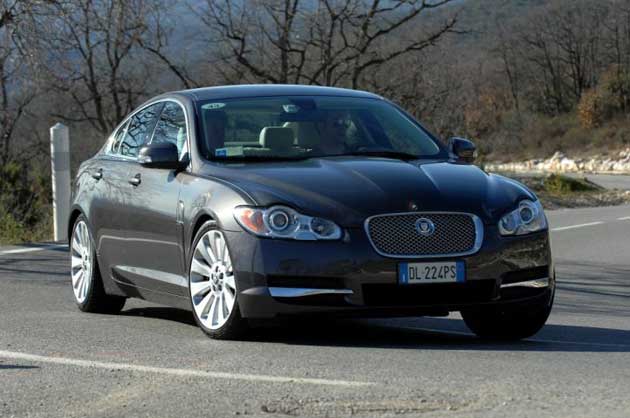Jaguar XF 2.7 litre V6 diesel

Your support helps us to tell the story
From reproductive rights to climate change to Big Tech, The Independent is on the ground when the story is developing. Whether it's investigating the financials of Elon Musk's pro-Trump PAC or producing our latest documentary, 'The A Word', which shines a light on the American women fighting for reproductive rights, we know how important it is to parse out the facts from the messaging.
At such a critical moment in US history, we need reporters on the ground. Your donation allows us to keep sending journalists to speak to both sides of the story.
The Independent is trusted by Americans across the entire political spectrum. And unlike many other quality news outlets, we choose not to lock Americans out of our reporting and analysis with paywalls. We believe quality journalism should be available to everyone, paid for by those who can afford it.
Your support makes all the difference. Price: £37,500
Top speed: 143 mph 0-60mph 7.7 seconds
Consumption: 37.6 mpg
CO2 emissions: 199g/km
Best for: corporate cats
Also worth considering: Audi A6, BMW 5-Series, Mercedes E-Class
Few car-makers have a history as distinguished as that of Jaguar, but for recent custodians of the brand that glorious past has been a burden rather than an asset. Faced with the impossibility of bettering the perfect curves of the Mark 2 and XJ saloons from the 1960s, for example, Jaguar timidly chose, with the fuddy-duddy mid-sized S-Type and compact X-Type, simply to copy them – although not very successfully, as the underlying proportions of the donor cars provided by Jaguar's then parent company, Ford, didn't conform to the "long, low and wide" look traditionally associated with Jags.
But with the S-Type's successor, the XF, Jaguar has finally found the courage to break free of its past, and present a modern face to the world. The result is a triumph. If the XF's sleek exterior styling has a hint of Mondeo about it, it has a much more generous helping, especially at the rear, of Aston Martin. The interior is impressive too, making effective use of the materials traditionally associated with British luxury cars but in a thoroughly modern way; wood and leather without the pipe and slippers. Equipment levels are high: all XFs are fitted with sat nav, TV tuners and DAB radios.
The XF's performance on the road lives up to the promise held out by its sharp new clothes. Our test car's 2.7-litre diesel engine is the cheapest and most economical option available. Most of the time it can scarcely be heard; when it is working hard, it gives off an agreeably deep but very muted roar; the standard six-speed automatic gearbox is perfectly matched to it. The XF's road manners match those of its German rivals, while, for the most part, its levels of comfort are probably even higher.
But while the XF is an outstanding product, I suspect that, once the excitement that greeted its introduction has died down, it may not be quite enough. At the moment, the XF range starts at a lofty £33,900 and offers no equivalent to the entry-level, low-CO2 emitting BMW 520d and Mercedes E220 CDI, its obvious company-car competitors. That probably needs to be fixed within a year if Jaguar is to maintain the momentum it has achieved since launching the XF. An estate model is essential too, if only as a means of hanging on to customers deserting the 4x4s made by Jaguar's sister company, Land Rover.
Those are all worries for the future. For the time being, Jaguar should be allowed, however briefly, to bask in the glory of a job well done.
Join our commenting forum
Join thought-provoking conversations, follow other Independent readers and see their replies
Comments